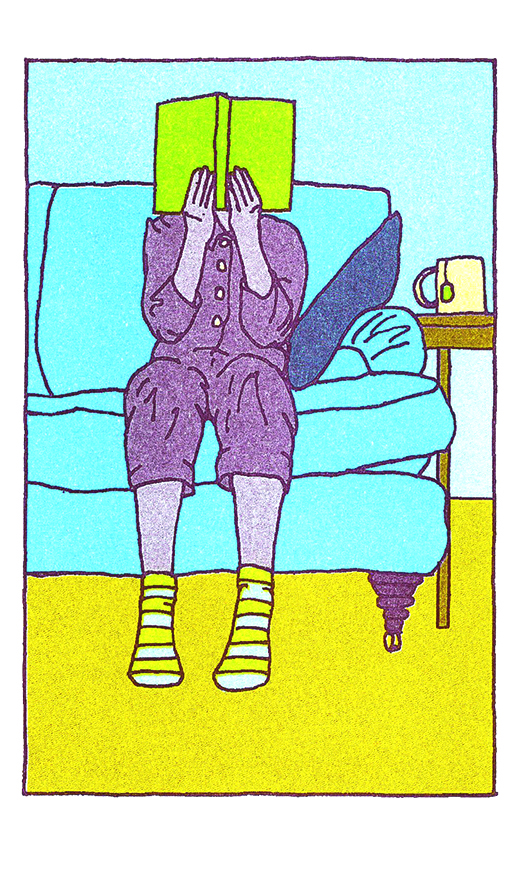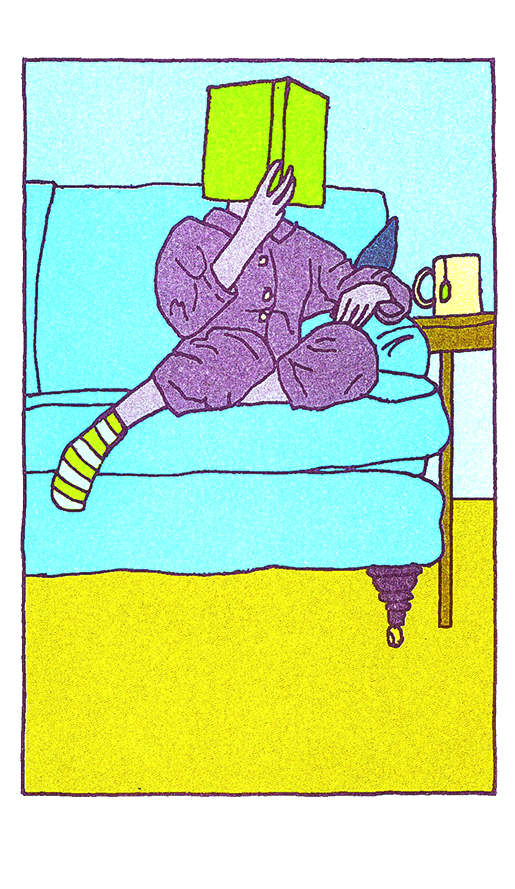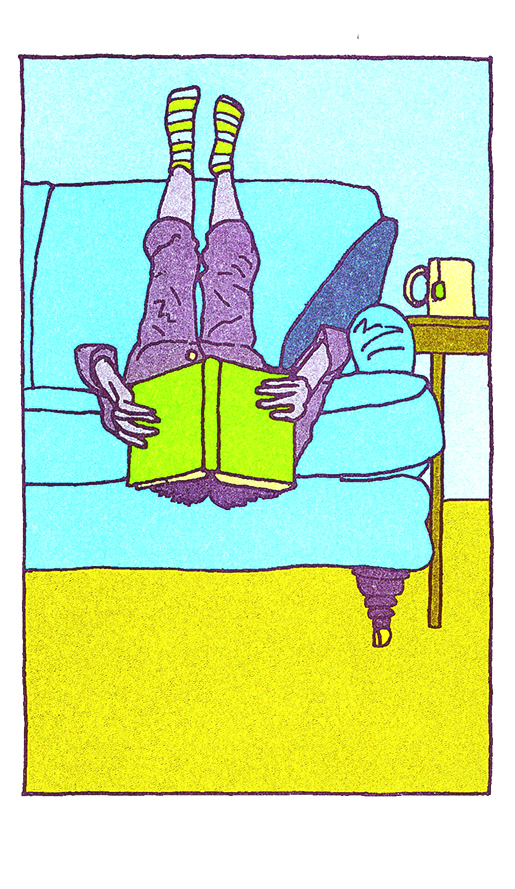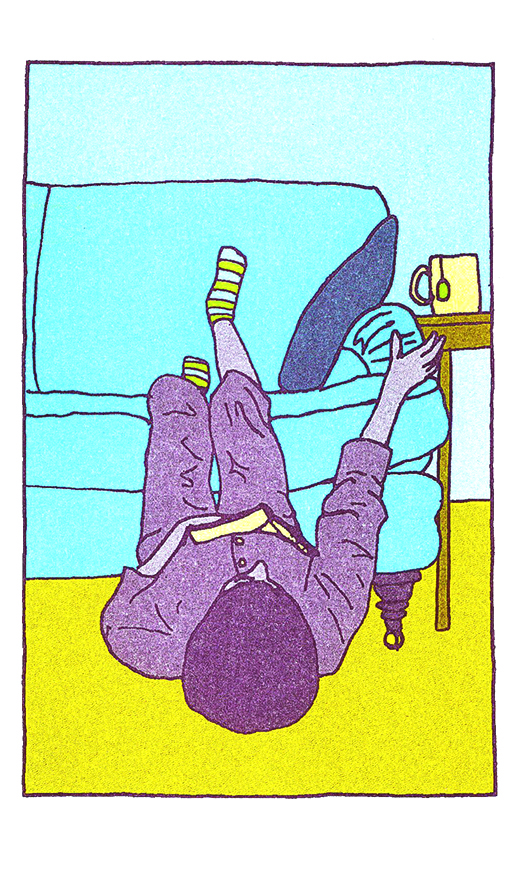
Possible Futures
Canadian artist working with speculative fiction within drag performance, moving image, writing and print. Read our interview here
My choice is an apocalyptic science fiction classic, Dhalgren by Samuel R Delany. I’ve been trying to finish this 800-page book for years, so self-isolation in the midst of a global pandemic seems like the perfect time to get lost in the end of another world, with an unreliable narrator inside my room. Delany often writes image and sensation in rich prose that you spend as much time on as poetry, as well as pages of dialogue and action that you’ll need to reread several times in order to wrap your head around what’s going on. You may have to work a little to get through it, but I still think about and revisit scenes and passages I read in this book two years ago.
Artist known for his post-pop-art paintings and active participation in the British art scene for over five decades
I have chosen The Buckminster Fuller Reader, first published in 1970. I came across Buckminster Fuller as an architecture student at Regent Street Polytechnic in the early 1960s. I didn’t stay there long, but he has remained with me. This is a collection of his writings from between 1942 to 1963—dense, fascinating and both difficult and inspirational at the same time. He draws conclusions about the state of the planet, both macro and micro, offering solutions and ideas while simultaneously declaring that he is an individual who is still learning. He charted the effects of his own pronouncements and designs as an indication of the growth of influence as an example to inspire others. Would that he had seen the social media of today.
Director of Auto Italia, an artist-run organisation in London
I will be re-reading Year of the Flood, the second novel in Margaret Atwood’s dystopian trilogy Oryx and Crake. The novel follows the lives of a religious sect called God’s Gardeners. The community are effectively gleaners who have developed a quasi-religious and totally self-isolated living and working systems centered on propagation and scavenging practices, making best of dilapidated urbans spaces affected by state-sanctioned viral pandemics designed to control and decimate world populations.
British artist working with paintings and ceramics. Read our interview here
I loved reading The Second Body by Daisy Hildyard, which proposes that we have an individual, physical body, which relates to the animal and our everyday functioning, and then a second, global body which is involved in larger systems on earth. Her questioning of the idea of a self which is isolated from external factors seems especially pertinent in this moment more than ever, as we consider the boundaries between our bodies and our relation to the world around us.
“Self-isolation in the midst of a global pandemic seems like the perfect time to get lost in the end of another world”
Humour
Portuguese artist working across photography, installation and sculpture, and founder of art space A Maior. Read more about A Maior here
My recommendation is Solitary Sex: A Cultural History of Masturbation by Thomas W. Laqueur. I might be cheating by recommending this book as I have only read the introduction two years ago… but it has been on my mind ever since! It’s a book that deserves absolute scrutiny to learn the ancestry of touching oneself and the political ramifications of self-pleasuring. Apt for these times of quarantine when the itch is right there, but meeting a stranger for a hook-up is too dangerous. I left this book at my parents’, so until the next apocalypse for me I guess.
Founder of magCulture, a design studio and London-based magazine shop
I have two books to recommend, actually: Ben Lerner’s first novels, Leaving the Atocha Station and 10:04. I love these and have read each several times. They’re brilliantly rich with the author’s own life and the global cultural industry he’s becoming a part of as he writes. There’s an excitement to each, a spontaneity like he’s realising something for the first time. Sometimes very funny, I can forgive the whiff of self-entitlement that can be seen as a product of the world we lived in until a few weeks back: live readings, gallery shows, travel, and me, me, me.
Canadian artist known for her comedic films, drawings and ceramics. Read our interview here
Endless Love by Scott Spencer. The story begins with the main character, David Axelrod, setting fire to his ex-girlfriend’s house in an ill-thought plan to win back her and her family’s affection by casually walking by just in time to save them. Unfortunately, the family is too high on acid to notice the fire. I first read this funny, bizarre and heartbreaking book for a film studies class at university called “Going Too Far”, led by George Toles, and have since read it about four more times.

Escapism
Artist and Royal Academician known for her intimate self-portraits and paintings of friends and family. Read our interview here
What do I want to read right now? The news compulsively, escapist books, maybe Anne of Green Gables? Or, best of all, Olivia Laing’s new book, Funny Weather: Art in an Emergency, which succeeds in reminding me that art really does save us. Reading these essays, I travel with Agnes Martin to New Mexico, or I’m with Derek Jarman at Prospect Cottage, or maybe best of all and most aptly, I’m living in a bender tent all alone trying to survive. I think we have never needed reminding more than we do right now that art can take us somewhere else; we can travel outside ourselves through reading and looking and watching. It can save us mentally, physically and spiritually. These essays take us there; they take us away from the scary times we are living through.
American artist working in print, video, performance, sound, sculpture, and installation
I’m reading Andrea Lawlor’s Paul Takes the Form of a Mortal Girl, a “smutty” bildungsroman set in the early 1990s. It follows twenty-three-year-old protagonist Paul Polydoris, who can switch between genders at will. With Orlando by Virginia Woolf and Ovid’s Metamorphoses as influences, Lawlor’s clever central framework allows for both a precise exploration of a trans experience while also allowing space for a literal and metaphorical magic that provides both a form of utopian imagination/escapism and, like all great science fiction, a universal window through which to more acutely see ourselves and the world around us. It’s extremely funny, confident and overwhelmingly sexy, inspiring and engrossing all at once. It’s a thrilling thing to read a book when you relinquish any sense of control and trust the author to lead you masterfully on a journey. It is a wonderful distraction that will also leave you feeling supremely awake.
Art critic and writer on fashion and design
Most of my last two months’ reading have been taken up with Blake Gopnik’s monster Warhol biography, but it is absolutely worth the time invested. It’s very gossipy—no shortage of sex, drugs and rock n’ roll—but Blake is also a brilliant and insightful critic, who deftly locates the true innovation within Warhol’s various “projects” and is winningly arch when addressing the cynical, sub par and hyperbolic.
Artist featured on the cover of Elephant Issue 41, and winner of the FBA Futures Art Prize 2020. Read our interview here
I would recommend The Summer Book by Tove Jansson, which I return to every year. It’s a charming story of solitude and growth. Set on a remote Island in the gulf of Finland, the book is full of beautiful descriptions of the remote landscape and documents the relationship between a young girl and her grandmother. It’s a wise and tender read; amongst its gentle humour there are undercurrents of melancholy and loss.
“It’s a book that deserves absolute scrutiny to learn the ancestry of touching oneself and the political ramifications of self-pleasuring”
Politics
British artist working across photography and installation, with a focus on the political contradictions of the urban landscape
K-Punk: The Collected and Unpublished writings of Mark Fisher, which was released by Repeater Books in 2018. Never have his writings felt more important than right now. “It’s easier to imagine the end of the world than the end of capitalism.”
Artist, photographer and filmmaker based between London and LA
This is a great time for reflection, but it’s important to not over-subscribe to the idea that you can conquer the world of reading, writing and learning it all whilst social distancing or in quarantine. With that being said, the Penguin Modern series is a great entry point to keeping the mind both stimulated and expanded. Major bonus: they’re all £1. From Camus to Audre Lorde to James Baldwin to Susan Sontag, there are fifty to collect, each with essays by some of the best thinkers, writers and artists. They offer in-depth but digestible critical analysis, new means of observation and abstract thought. To create dangerously is my manifesto. The first essay in Camus’ book has many collectable one liners, including the timely: “Today the rebirth depends on our courage and our will to be lucid.”

Imagination
Canadian artist working with pastels to create drawings and large-scale installations. Read our interview here
I’d recommend Float by Anne Carson. It’s a collection of short works inside a case, which can be taken out individually. Some of their titles are: “Variations on the Right to Remain Silent”, “By Chance the Cycladic People” and “How to Like ‘If I Told Him: A Completed Portrait of Picasso’ by Gertrude Stein”. This has been good for my short but willing attention span and my desire to own many small things.
Queer performance and video artist represented by Belmacz
I recommend Myths and Legends of Greece and Rome by E.M.Berens. Any book that promises “many hours of pleasure for the general reader” on the back is good. I found it when I was eighteen and quarantined in an attic in Berlin. It has a little paragraph on each god, king, queen and myth—just enough to whet the appetite, with quotes and a simple retelling that gets the mind going. It’s enough to lead to hours of further investigation and googling. Whether it’s Oedipus or Circe, Hades or Vestal Virgins, there is something here for everyone.
“It’s important to not over-subscribe to the idea that you can conquer the world of reading, writing and learning it all whilst social distancing”
Community
Head of Exhibitions at the De La Warr Pavilion, an arts centre in an iconic modernist building by the sea
My book is bell hooks’ All About Love. Writing with immense clarity, hooks proposes that we consider love as an action through which generosity, compassion and common purpose can emerge. For hooks, love forms the basis of resistance to patriarchal politics of domination and, importantly, self-centredness. This form of resistance is exactly what we need right now.
Artist whose work spans drawing, painting, installation and sculpture, and winner of the Max Mara Art Prize for Women. Read our interview here
I’m reading What’s Love (or Care, Intimacy, Warmth, Affection) Got to Do with It?, published by Sternberg Press in 2017. It’s a compilation of essays examining need, care, desire and admiration by writers such as Paul Chan, Martha Rosler, Jan Verwoerd, Tavi Meraud and Jamal Toufic. Our current situation challenges us across the board, on so many levels: social, personal, political, medical. It’s good to spend my self-isolation getting to grips with ways of rethinking how we live, love, care and interact. Surely caring is one of the most important human qualities right now?
Artistic Director of Art Night, London’s largest free contemporary art festival
Can I give you two books? I have been reading, re-reading and admiring Jasleen Kaur’s Be Like Teflon, a book she made with Glasgow-based curators Panel and the Glasgow Women’s Library this year. It holds a series of conversations between Jasleen and women of Indian heritage, and includes recipes and a parallel text by curator Amanprit Sandhu—it’s powerful, emotional and beautifully made. I also want to give a shout out to Marian Keyes, who got me through this last weekend; I was finding the anxiety around what is happening pretty tough and basically read her new novel Grown Ups cover to cover. Classically, as a woman writer, she is often dismissed as frivolous, but I think she’s incredible and her books are page-turners with excellent women in them.

Guidance
Artist and illustrator working between the worlds of art, fashion and design
I recommend The Philosophy of Andy Warhol, From A to B and Back Again. Don’t be fooled by the title, this is a dead easy read with immediacy and gravitas. Andy’s pearls of wisdom on all things important or challenging in life, such as love, sex, death, beauty, time and work, are delivered with panache, wit and insight. It is life affirming without the sentimentality. A real bright gem of a book and I love it.
Founder and director of her eponymous East London gallery
The book I would recommend that can provide hours of enjoyment and much inspiration in isolation is The I-Ching, the Chinese “book of changes”. The insights provided by the ancient hexagrams associated with this book have provided calm and consideration, especially in intense times when guidance and clarity are needed.
“It’s good to spend my self-isolation getting to grips with ways of rethinking how we live, love, care and interact”
Exercises in Language
Multi-disciplinary artist with a focus on figurative painting. Read our interview here
I read about five books at the same time normally… but my current obsession is top of the list: Alphabet by Inger Christensen. This is an extended poem that insists on being read outside and out loud. I cannot stop reading it over and over to anyone who will listen and to empty rooms. If I’m feeling brave, I read it outside to the wildlife, trees and any general public that happen to be nearby! It’s described as psalm-like. To me, it feels hopeful and complicated, and it feels amazing in the mouth.
Mixed-media artist working with photographic and digital anthologies
I’ve just finished Satantango by Lazlo Krasznahorkai, which is a total masterpiece. I loved it. A review on the back cover from W.G.Sebald says: “Far surpasses all the lesser concerns of contemporary writing.” Satantango, the seven-and-a-half-hour-long film by Bela Tarr, will always be in my all-time-favourite film top ten. I found that the book is as impeccable in its construction as the film, and I would never have discovered the book if it hadn’t been for the film. On a recent trip to the Curzon cinema, I was surprised to see that there is a scheduled screening of a remastered in 4K version of Satantango in April. I wonder if the screening will go ahead, and whether Curzon will have an interval—Bela Tarr was originally against the idea.

Love and Loss
Director of Studio Voltaire, the South London, non-profit exhibition space and artist studios
The Ballad of the Sad Cafe by Carson McCullers. Who doesn’t like a love triangle? Especially when it’s between a mean felon, a sickly hunchback and a butch misanthropic woman. I’ve come back to this novella at various points in my life, and now feels like as good as time as any for a book about both transformative and unrequited love.
British artist working with sculpture and ceramics
My recommended book is called What I Loved by Siri Hustvedt. This book is so beautiful and moving. It tells the tale of two families on the New York art scene, and how their lives and grief intertwines over the years. I think the way in which Hustvedt is able to conceptualise and describe an artists lifelong career to such a tangible extent is a feat in itself; let alone writing a book that both breaks your heart and is enjoyable!
British artist working with painting, drawing and installation. Read our interview here
I’d recommend The Heart is a Lonely Hunter by Carson McCullers, published in 1940. It’s a terrifically tender and ugly reflection on loneliness, love and desire, arising out of a small mill town in 1930’s Georgia, USA. The characters that McCullers invokes are always equal parts sickening and beautiful, barbaric and sensual, and given they’re always “other” in some way, treated with such empathetic kindness and sincerity. She’s a great reminder of the depravity that lurks inside us, the insatiable cruelty, but at the same time our ability to love and to forgive.
All illustrations by Antonia Stringer
Stay the Fuck Home
Our special series offers creative approaches to the long days of self-isolation during this global crisis.
EXPLORE THE SERIES





